Climate Data Continue to Indicate Global Warming
Scientists tend to be very independent thinkers, conservative, and don’t accept new ideas readily. Getting a consensus from them is analogous to herding cats. Here are two examples.
Tom Dillehay, an anthropologist, was doing research in southern Chile in the 1970s. He worked at a site called Monte Verde and his research led him to the conclusion that early peoples there predated by 1,500 years the earliest [Clovis] site in North America; [Nature Vol.514, p24-26, 2 October 2014.] For two or more decades an acrimonious debate ensued before his research was validated by other anthropologists. His laboratory and field notebooks were even examined since his findings were so controversial. How could a site in southern Chile be older than ones in North America if peoples crossed the land bridge from Siberia to Alaska?
Another case in point is that of the Nobel prize-winning physicist Luis Alvarez and team. They advanced the idea in 1980 that a massive asteroid impact on Earth caused the demise of the dinosaurs. This caused an enormous stir in the paleontology community. How could a physicist suggest this concept in their field of research? It took 30 years before a group of 41 scientists in 2010 reviewed the literature and found that it was the best explanation for this event.
And so it is, or rather was, with climate change. It took many years before there was general agreement that Earth was warming and that the primary cause was carbon dioxide from the combustion of fossil fuels. To get thousands of persnickety scientists to agree on something of this magnitude is truly significant.
This scientific agreement caused many governments around the world to take the issue seriously and to make policy decisions to reduce this problem. One entity is Scotland. See illustration with numbers 126% in large type [Lang Banks].
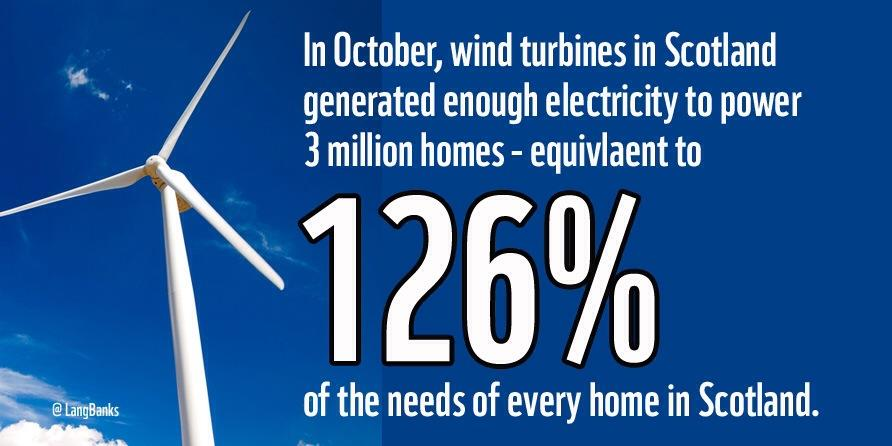
These numbers were published by World Wildlife Fund, Scotland on November 4, 2014. “While nuclear power plants were being forced to shut because of cracks, Scotland’s wind and sunshine were quietly and cleanly helping to keep the lights on...” according to Lang Banks, director of WWF.
The Scottish Renewables report in September 2014 showed continued investment in wave and tidal energy generation and the approval since of 2.2 gigawatts [GW] of new offshore wind energy capacity. Note the impressive graph “Total Installed Capacity of Renewable Electricity in Scotland 2007-2013”.
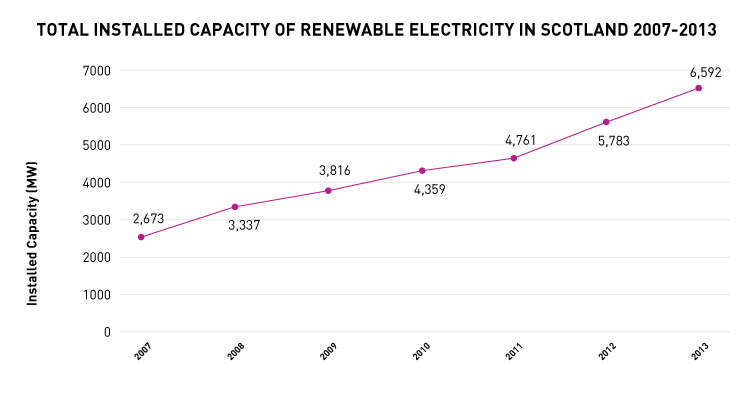
Meanwhile, China, undergoing enormous economic changes, recognizes the toll that massive amounts of coal burning is having on the health of their population and the environment. A report issued by NRDC in 2014, indicates that about 670,000 deaths in 2012 were caused by air pollution. The graph, “Wind- and Nuclear-generated Electricity in China,” shows tremendous growth in wind energy generated electricity.
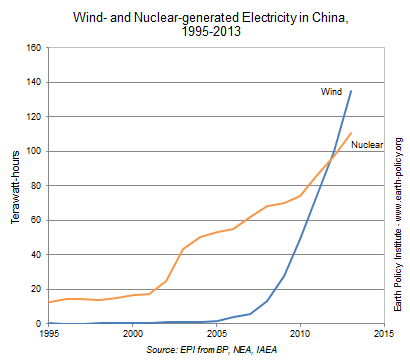
Indeed ‘Wind’ has now passed ‘Nuclear’ in terms of generation of electricity in China. The wind farms can be built relatively quickly without the potential hazards associated with nuclear power plants [such as Fukushima, Chernobyl] and safety issues associated with long term storage of nuclear waste.
Meanwhile new climate data is being developed continuously and they all point to a warming planet. And, scientists from many different disciplines find no fault in the data. How can they? The data is from instruments and thermometers.
NASA reports that globally, September 2014 was the warmest September ever recorded [134 years of data]. It was 1.39 degrees F above the 1951-1980 average for September. This follows a record month for August. Again, no disagreement from the scientists.
The chart, “Monthly Global Average Temperature in October” 2014 is from the Japan Meteorological Agency. It has data from 1890 to today and the trend is clear: October set a record high and 2014 is on track to be the hottest year globally on record.
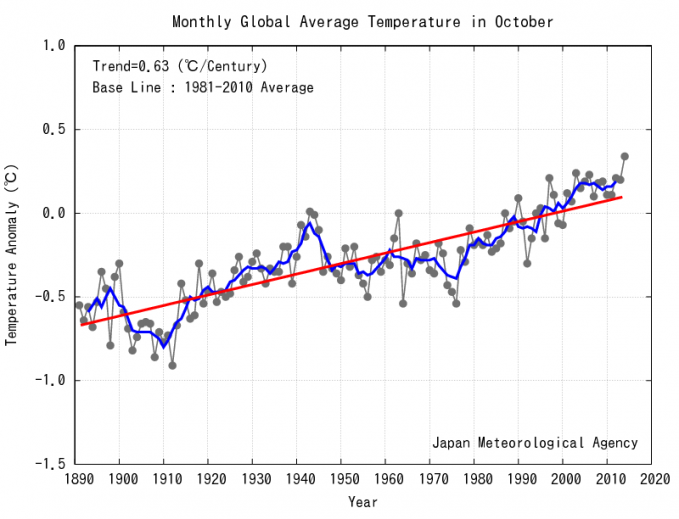
How about the bar chart labeled “10 Warmest Years On Record Globally”? This data is from NOAA/NCDC and is also based on thermometer and instrument measurements. The 10 warmest years since 1880 in ascending order have all been since 1998. Those persnickety scientists seem to be ok with all of that data too.
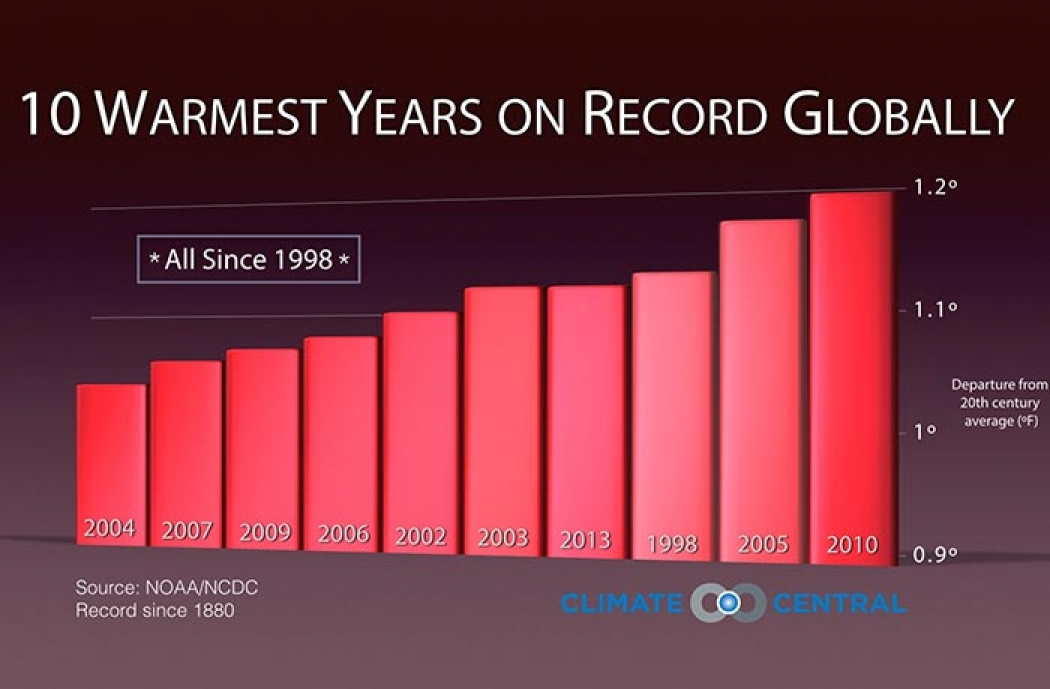
So what is the problem with accepting Climate Change and taking steps to address it?
And so it goes.
The scientific career of Raymond N. Johnson, Ph.D., spanned 30 years in research and development as an organic/analytical chemist; he is currently founder and director of the Institute of Climate Studies USA (www.ICSUSA.org). Climate Science is published the first Sunday of every month.



